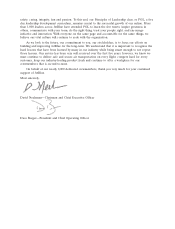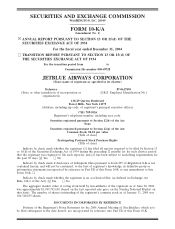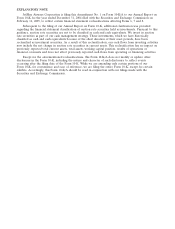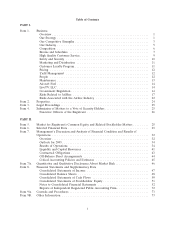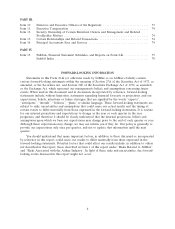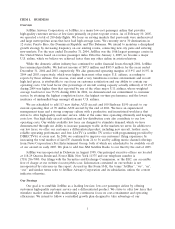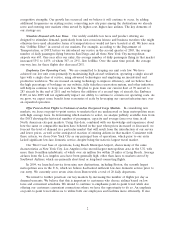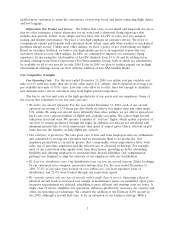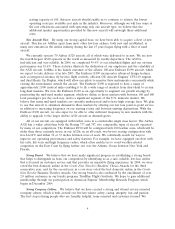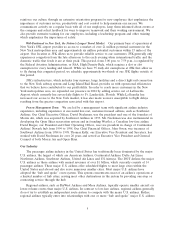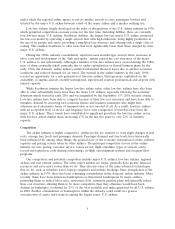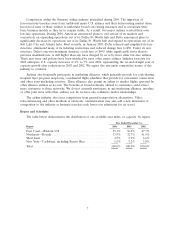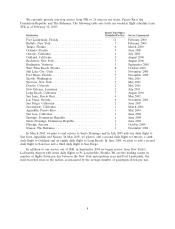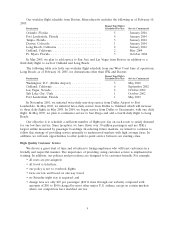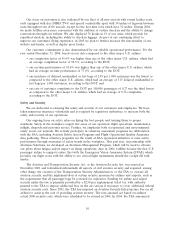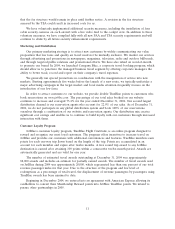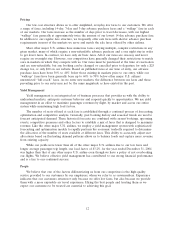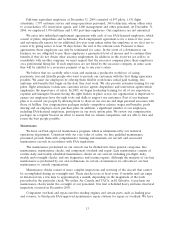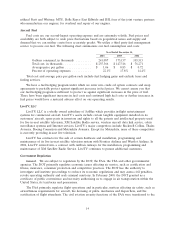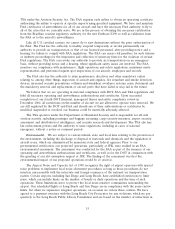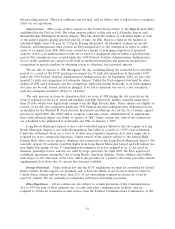JetBlue Airlines 2004 Annual Report Download - page 14
Download and view the complete annual report
Please find page 14 of the 2004 JetBlue Airlines annual report below. You can navigate through the pages in the report by either clicking on the pages listed below, or by using the keyword search tool below to find specific information within the annual report.under which the regional airline agrees to use its smaller aircraft to carry passengers booked and
ticketed by the major U.S. airline between a hub of the major airline and a smaller outlying city.
Low-fare airlines largely developed in the wake of deregulation of the U.S. airline industry in 1978,
which permitted competition on many routes for the first time. Including JetBlue, there are currently
four low-fare major U.S. airlines. Southwest Airlines, the largest low-fare major U.S. airline, pioneered
the low-cost model by operating a single aircraft fleet with high utilization, being highly productive in
the use of its people and assets, providing a simplified fare structure and offering only a single class of
seating. This enabled Southwest to offer fares that were significantly lower than those charged by other
major U.S. airlines.
During the 1980s, industry consolidation, rapid increases in multi-type aircraft fleets, increases in
labor costs and development of the ‘‘hub and spoke’’ system caused the cost structures of the major
U.S. airlines to rise substantially. Although a number of low-fare airlines were created during the 1980s,
most of them eventually failed, primarily due to under-capitalization or flawed business plans. In the
early 1990s, the domestic airline industry suffered substantial financial losses due to adverse economic
conditions and reduced demand for air travel. The turmoil in the airline industry in the early 1990s
created an opportunity for a new generation of low-fare airlines. Entrepreneurs capitalized on the
availability of surplus aircraft, recently unemployed, experienced aviation professionals and airports with
unused capacity.
While Southwest remains the largest low-fare airline today, other low-fare airlines have also been
able to offer substantially lower fares than the major U.S. airlines, especially following the economic
downturn which started in early 2001 and was magnified by the September 11th, 2001 terrorist attacks.
Low-fare airlines have been able to compete because of their low-cost structures and have been able to
stimulate demand by attracting fare-conscious leisure and business passengers who might have
otherwise used alternative forms of transportation or not traveled at all. As a result, low-fare airlines
with an acceptable level of service and frequency have seen a migration of travelers away from the
major U.S. airlines. These trends have contributed to significant growth in the low-fare airline sector,
with low-fare airline market share increasing 47% in the last five years to over 22% of domestic
capacity.
Competition
The airline industry is highly competitive. Airline profits are sensitive to even slight changes in fuel
costs, average fare levels and passenger demand. Passenger demand and fare levels have historically
been influenced by, among other things, the general state of the economy, international events, industry
capacity and pricing actions taken by other airlines. The principal competitive factors in the airline
industry are fare pricing, customer service, routes served, flight schedules, types of aircraft, safety
record and reputation, code-sharing relationships, in-flight entertainment systems and frequent flyer
programs.
Our competitors and potential competitors include major U.S. airlines, low-fare airlines, regional
airlines and new entrant airlines. The other major airlines are larger, generally have greater financial
resources and serve more routes than we do. They also use some of the same advanced technologies
that we do, such as ticketless travel, laptop computers and website bookings. Since deregulation of the
airline industry in 1978, there has been continuing consolidation in the domestic airline industry. More
recently, there have been numerous bankruptcies or threatened bankruptcies by major airlines,
permitting them to reduce labor rates, restructure debt, terminate pension plans and generally reduce
their cost structure, allowing them to be more competitive than they otherwise would have been.
Airlines in bankruptcy accounted for 23% of the total available seat miles generated by all U.S. airlines
in 2004. Further consolidation or bankruptcies within the industry could result in a greater
concentration of assets and resources among the largest major U.S. airlines.
6


